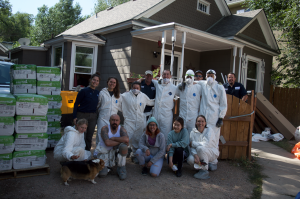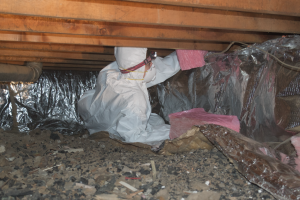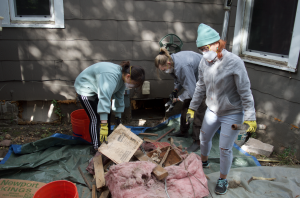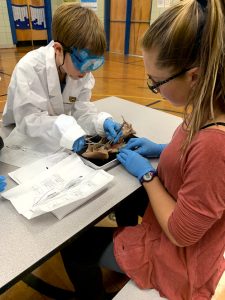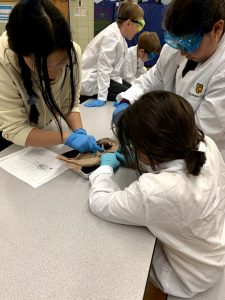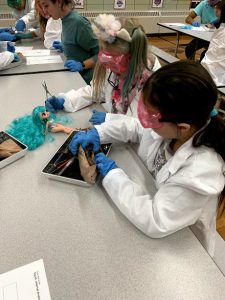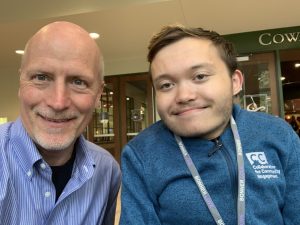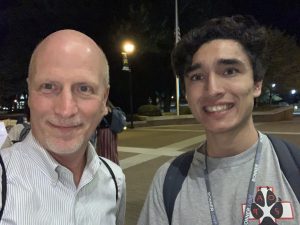Originally from the town of Tesáre, Slovakia, Filip Carnogursky (’23) is making huge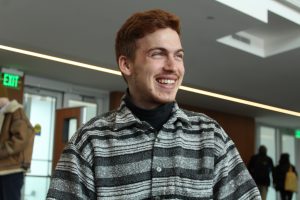 waves in Colorado College as part of the Community Engaged Fellowship program. I sat down with him to hear about his thoughts on the program, his work within, and how he is able to accomplish so much.
waves in Colorado College as part of the Community Engaged Fellowship program. I sat down with him to hear about his thoughts on the program, his work within, and how he is able to accomplish so much.
I want to start of this interview by asking you in your own words, what exactly is the Community Engaged Fellowship?
This is something that is always so hard to define for me. I’d say it is a fellowship for students that have been socially engaged before coming to college, and for students who come from lower backgrounds economically that are not necessarily represented in schools today in higher education. This fellowship works in a way that we get paid for doing social engagement work so that we can keep going to college and doing this work instead of working in the cafeteria or in other places, enabling us to continue working for our communities. It’s also a holistic program, we talk about everything, spiritual life, the current year, and how we can further engage our community.
That was quite a long answer, I’m sorry
No that’s great, long answers are awesome
What exactly do you think it means for you specifically, being a Community Engaged Fellow?
For me, it is a responsibility. I feel responsible for using this opportunity as much as I can to its fullest potential. Since somebody trusts me in such a way, it’s a big privilege I would say for me and for all the other community engaged fellows, but speaking for me it’s a huge privilege to be paid for something that you like to do, and something that has added value to the whole community, it feels very nice, when you do this work it’s fulfilling and at the same time you get money from that. I feel like it’s a great match, and from this opportunity I feel like it comes with a lot of responsibility as well, somebody trusts us in such a way that they give us money for social engagement work. I feel like we, and myself included, should try to be engaged as much as possible and as effectively as possible. Not just to get those hours in, but to actually be able to see something behind me when I’m finished. I feel like it comes from that, that I have this privilege.
What are some of your current projects?
Since the beginning, I really like that [this] Fellowship allows you to explore, especially in the first semester, you can go to different sites, different community partners, whether on campus or beyond campus, and you can just go there, try it out, and come back. I have been working with homeless people at the shelter. I was mostly cleaning there and helping them with the food, but mostly what I do is work with sustainability oriented initiatives, so since the beginning of the last semester, since I came here I participated in various groups such as the Sunrise Movement, Environment Colorado, EnAct and others, mostly I was working with Environment Colorado, helping to organize the protest against Senator Gardner’s inaction on climate change. So we collected five hundred petitions, bringing it over to the Colorado Springs town hall with around sixty some people, it was a lot of fun, we were dancing all the way to his office, running the petitions to him.
It was a great experience, as I was organizing this I realized that there is so much to be done on campus in terms of sustainability still, so I’m trying now with some other people in our group, we try to coordinate sustainability efforts on campus, we are going to put all of the groups together so let’s say there are people in EnAct, in Sunrise, in the Office of Sustainability and many others. Many times what happens is that there are sustainability events that happen at the same time, and these two events are competing for the same students basically. So what we are trying to do is to make a list serve for all of the students who are interested in sustainability, then we will make a calendar, and in the end we will put in each of the areas the option of where you would like to focus your efforts, this is an idea to collectivize the whole effort.
Beyond Campus I’m working with the Sierra Club, since the Martin Drake power plant is still here in front of us, and it’s still burning coal almost every single day, and so I’m trying to do everything I can to stop it, because it’s going to be retired, but it’s up to us how soon that day will come. So we’ve been to many city council meetings, to the utility board meetings and advocated for closing it earlier.
Do you feel that all of these things that you have been doing have gotten you closer with the community, both with CC and with Colorado Springs?
Oh for sure, I think that if I wasn’t a Community Engaged fellow, I would have still been active in the local community and beyond, but it would be much less sustained and continuous, so I would maybe go to the homeless shelter once in a month, and try to help somewhere else, but I feel like thanks to this I have been part of the community now much more, especially because I have had so much time to explore the different groups and I know many people in these different groups, so I feel like this fellowship was enhancement definitely for my social life and my sense of belonging to Colorado College, and to Colorado Springs.
How does your being a Fellow interact with the block program?
I feel like it really depends on the block, sometimes they are harder, sometimes it is easier, but overall it is true that it is one more thing to do. However, it’s something that is extremely fulfilling, so I always try and find time for community engaged work, and what is good about [this] Fellowship is that it is up to me, so let’s say we need to work twenty one hours in one block, it’s incredibly doable, and even if we can’t finish our twenty one hour requirement, we can always communicate with the CCE and the other staff, and they are very understandable, so I must say, that even though it adds to my task list, and sometimes puts me off track academically, because I find it so much more fun to do community work to be honest. I feel like it is up to you, but since my work is more continuous and needs more committee meetings and more planning sessions it’s kind of nicely balanced out throughout the days.
So you feel as if your first semester is going well thanks to these programs?
In many ways. I would absolutely agree with that.
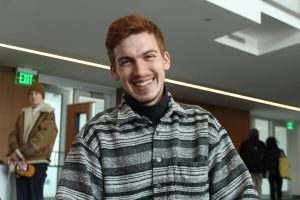 Are there any last thoughts you would like to share about the Community Engaged Fellowship?
Are there any last thoughts you would like to share about the Community Engaged Fellowship?
I just wish there were more spaces in this program for people like me. I feel that there would be so many more kids that would be thriving with this opportunity, and I’m really glad that for some reason they gave this opportunity to me. I won’t let them down.

